Einleitung
Diese Anleitung wird dir beim Einbau einer zweiten HDD oder SSD helfen. Du musst dabei nicht das optische Laufwerk auf Dauer stilllegen oder entfernen.
Werkzeuge
-
-
Löse die drei Kreuzschlitzschrauben, mit denen die Abdeckung auf der unteren Seite des iMac befestigt ist.
-
Entferne die Abdeckung des iMacs.
-
-
-
Schiebe mit den Fingern oder der Spudgerspitze die schwarze Zuglasche aus Plastik für die RAM Aufnahme aus der schmalen RAM Öffnung.
-
-
-
Ziehe die schwarze Lasche aus dem iMac heraus, um die RAM Chip aus ihrem Anschluss auszuwerfen.
-
Schiebe den RAM Chip mit den Fingern aus seinem Anschluss.
-
-
-
Befestige je einen Heavy Duty Saugheber in den beiden oberen Ecken der Glasscheibe.
-
Halte den Saugheber leicht an der Scheibe und hebe den beweglichen Henkel bis er parallel mit dem anderen ist (wie im dritten Bild gezeigt).
-
-
-
Hebe die Glasscheibe rechtwinklig so weit vom Display weg, dass sich die metallenen Befestigungsstifte an der Unterseite der Oberkante lösen.
-
Ziehe die Glasscheibe weg von der unteren Kante des iMac und lege sie vorsichtig beiseite.
-
-
-
Lege den iMac vorsichtig seitlich auf eine flache Oberfläche.
-
Benutze dieses Werkzeug, um eine Seite der oberen Kante des Bildschirms an ihrem metallen Rahmen zu hochzuheben.
-
Halte den Bildschirm hoch genug, um an die Kabel zu gelangen.
-
-
-
Löse das Kabel für die Vertikalsynchronisierung in der oberen linken oberen Ecke des Bildschirms. Drücke mit der Spudgerspitze auf die Seitenlaschen des Verbinders und lasse diesen so ganz vorsichtig aus seinem Anschluss heraus wandern.
-
-
-
Löse das Kabel der LED Rückbeleuchtung, indem du die Sperrklinke mit der Hand herunterdrückst und diesen in Richtung der Unterkante des Bildschirms gleiten lässt.
-
-
-
Ziehe die schwarze Lasche gerade nach oben, um den ZIF Verbinder des Datenkabels zum Bildschirm zu öffnen.
-
Ziehe weiterhin in Richtung der Oberkante des Gerätes, um das Datenkabel abzulösen.
-
-
-
Ziehe nun ganz vorsichtig den Bildschirm in Richtung der Oberkante deines iMac und hebe ihn aus dem Gehäuse.
-
-
-
Lege das Display mit der Vorderseite nach unten auf eine glatte, weiche Unterlage.
-
Falls ein Kabel unter einem Klebeband befestigt ist, entferne immer erst das Klebeband. Ziehe nicht direkt am Kabel.
-
Ist ein Kabel mit Heißkleber an dem Chassis fixiert, benutze einen erhitzten iOpener oder einen Fön, um den Kleber zu aufzuweichen . Dann kann man ein Plektrum (Opening Pick) unterhalb des Kabels entlang schieben, um es zu lösen. Ziehe niemals an den sehr empfindlichen Steckern.
-
Schiebe ein Plektrum unter die Schaumstoffteile, um sie vom Display zu lösen und ziehe sie dann vorsichtig ab. Man benötigt unter Umständen dünnes, doppelseitiges Klebeband, um sie auf dem neuen Display zu befestigen.
-
-
-
Ziehe mit dem flachen Ende eines Spudgers das optische Datenkabel aus dem optischen Laufwerk heraus.
-
-
-
Ziehe mit der Spudgerspitze den Verbinder des Temperatursensor des optisches Laufwerks aus seinem Anschluss.
-
-
-
Entferne die vier T10 Torx Schrauben, die das optische Laufwerk am Gehäuse des iMac befestigen.
-
-
-
Hebe die linke Seite des optischen Laufwerks leicht an, ziehe es dann seitlich weg um die Zentrierstifte zu befreien.
-
-
-
Verwende das flache Ende des Spudgers, um den Anschluss des Ventilators für das optische Laufwerk aus dem Sockel herauszuziehen.
-
-
-
Verwende das flache Ende des Spudgers, um den I/O-Anschluss aus seiner Fassung zu entfernen.
-
-
-
Finde die AirPort-Karte oben in der Mitte des Logic Boards, direkt unter der Festplatte.
-
Verwende das flache Ende des Spudgers, um die Antennenkabel zu entfernen.
-
-
-
Verwende das flache Ende des Spudgers, um den Anschluss des Kamera-, Bluetooth-, und Umgebungslicht-Sensors zu entfernen.
-
-
-
Verwende das flache Ende des Spudgers, um den Anschluss des Festplattenlüfters zu entfernen, indem du auf die Laschen drückst.
-
-
-
Du findest den IR Sensor hinter dem schwarzen Apple Logo.
-
Entferne den IR Sensor, indem du ihn gerade nach oben aus dem Gehäuse ziehst.
-
-
-
Entferne die acht T10 Torx Schrauben, die das Logic Board und den Kühlkörper am iMac befestigen.
-
-
-
Hebe und drehe das Logic Board und den Kühlkörper gleichzeitig weg vom iMac-Gehäuse, bis du Zugang zur Rückseite des Logic Boards hast.
-
-
-
Du findest den zweiten SATA Anschluss neben dem primären SATA Anschluss.
-
Stecke das SATA Daten- und Stromkabel an.
-
-
-
Führe das neue SATA-Kabel durch dieselbe Aussparung wie das erste Kabel, und in den Schacht des optischen Laufwerks.
-
Platziere das Logic Board wieder an seinem Platz, ohne die Kabel zu bedecken oder einzuklemmen.
-
-
-
Um die neue Festplatte in deinem iMac zu befestigen, klebe starkes doppelseitiges Klebeband in alle vier Ecken auf der Seite des SATA Anschlusses.
-
Entferne auf einer Seite die Plastikfolie vom Kleber.
-
Drücke die freigelegte Klebefläche in eine Ecke der SSD.
-
Wiederhole die oben genannten Schritte für alle 3 Ecken.
-
-
-
Schließe das SATA Daten- und das Stromkabel an die jeweiligen Anschlüsse der SSD an.
-
Entferne die Rückseite des doppelseitigen Klebebands.
-
Klebe die SSD hinter das optische Laufwerk so weit wie möglich in die untere linke Ecke.
-
Wenn du mit dem Platz deiner SSD zufrieden bist, drücke sie gegen das Gehäuse, bis sie gut befestigt ist.
-
Arbeite die Schritte ab Schritt 27 in umgekehrter Reihenfolge ab, um dein Gerät wieder zusammenzubauen.
71 Kommentare
Don´t forget to take out the RAM first. Otherwise it is very difficult to replace the logic board back in it´s place.
B Riefel -
Excellent guide. Thank you!
I got through everything, turned on the iMac, got the start up gong, and ... nothing. Screen stayed black and the fans started blowing like crazy, indicating failure of Apple Hardware Test. All my attempts to remedy (zap PRAM, reset SMC) failed. Uh oh.
Opened the machine back up, took out the LCD, and re-seated all four connections from display panel to logic board. Crossed my fingers and put it back together. This time, the displayed turned on, the Apple logo appeared, system booted up, and the new SSD appeared on the desktop. Yay!
The connectors from the LCD are delicate. It's tricky to seat them properly without damaging them, but don't close it up without a positive click on each one.
The upgrade has been fantastic so far. SanDisk 120GB SSD. Dramatic speed improvement. Well worth all the surgery on the machine.
in step 22 you can see the wifi cables are not connected anymore. but there is no step that shows you should disconnect them
+1 Unfortunately mine has been broken (CH1 cable is out from the UFL connector). Unfortunately I do not now how to repair it.
It would be important to add this step in order to protect others falling into the same issue.
PeterZ -
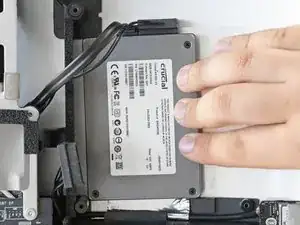
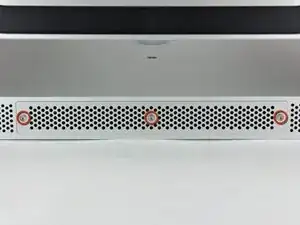
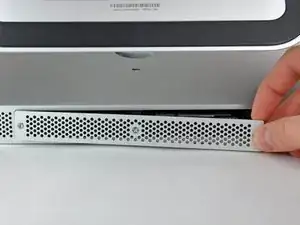
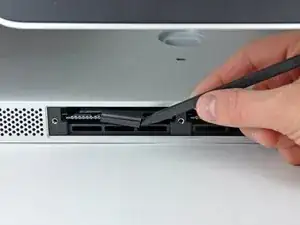
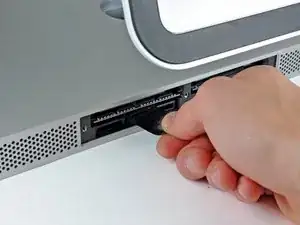
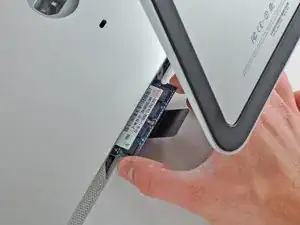
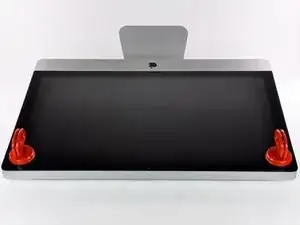
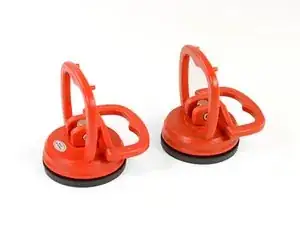
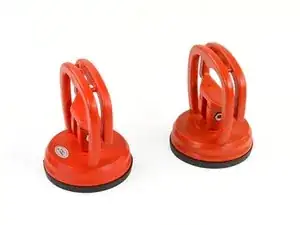
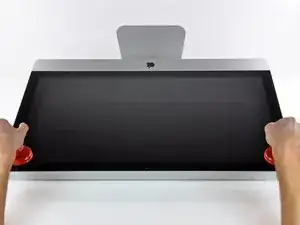
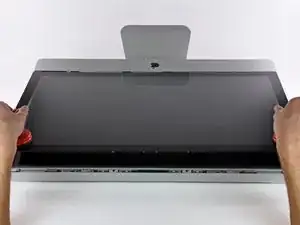
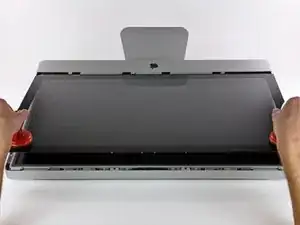
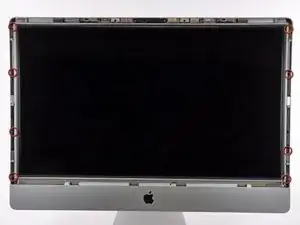
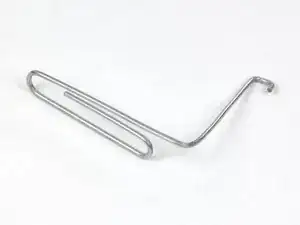
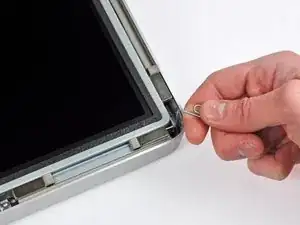
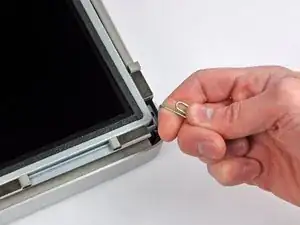
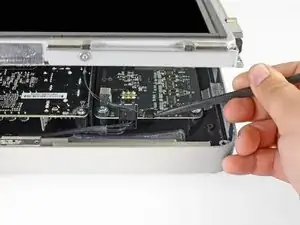
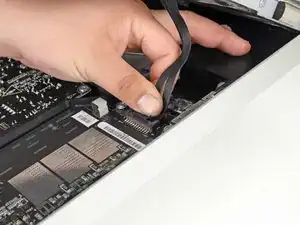
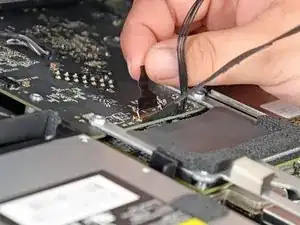
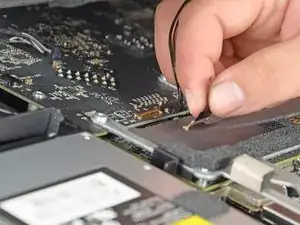
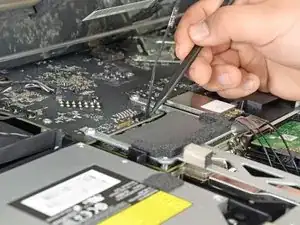
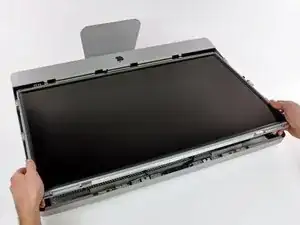
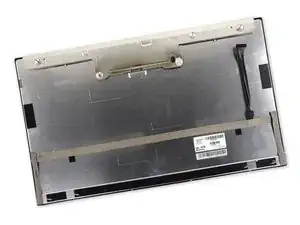
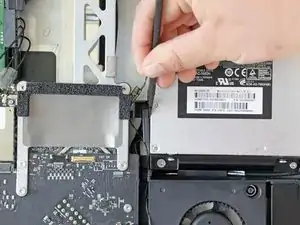
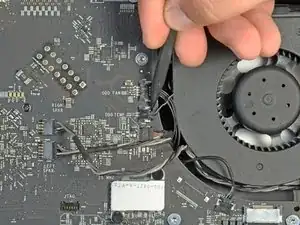
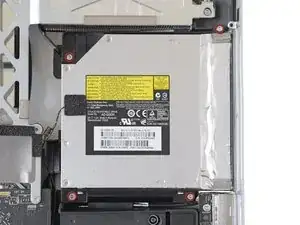
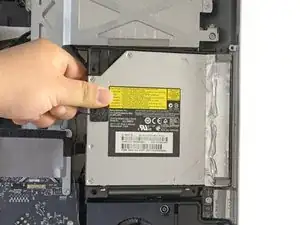
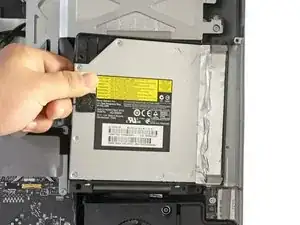
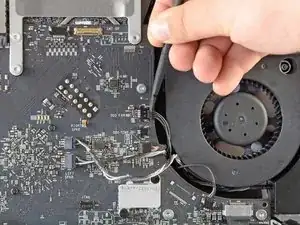
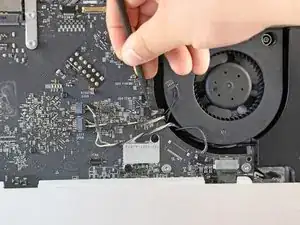
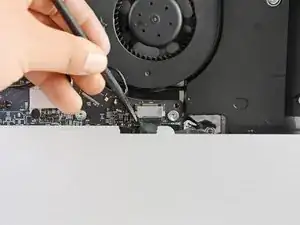
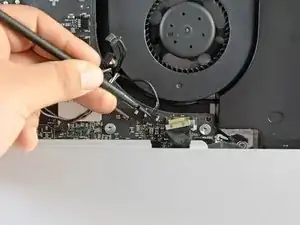
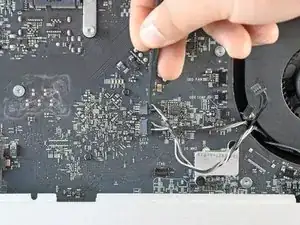
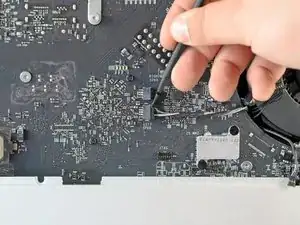
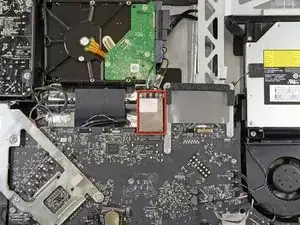
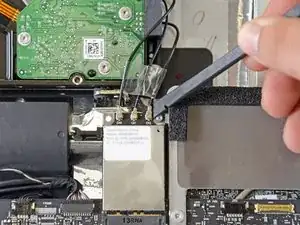
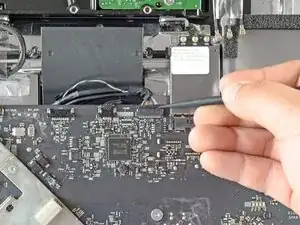
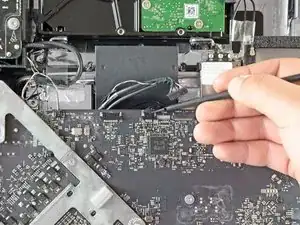
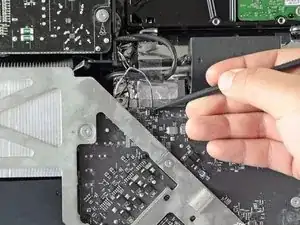
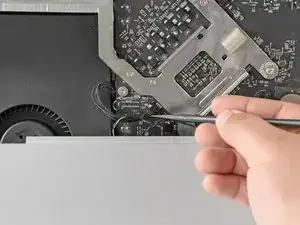
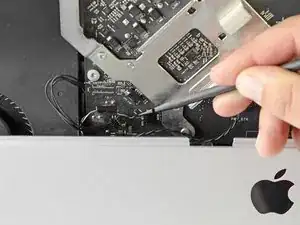
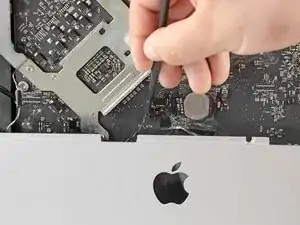
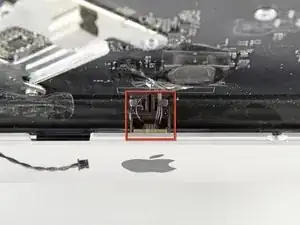
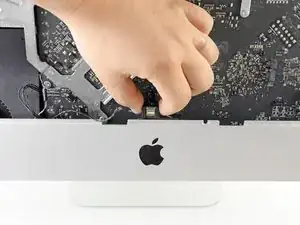
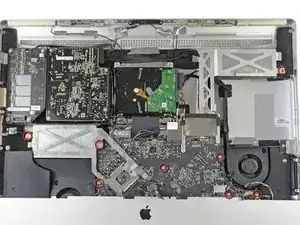
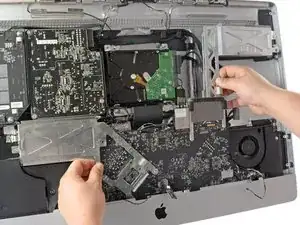
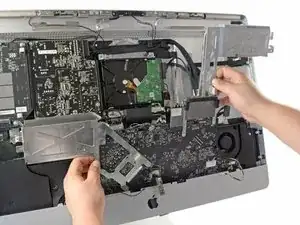
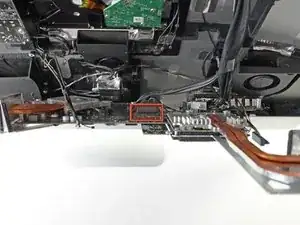
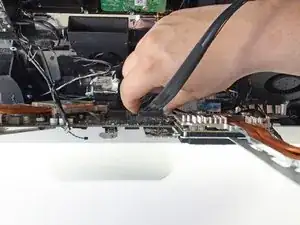
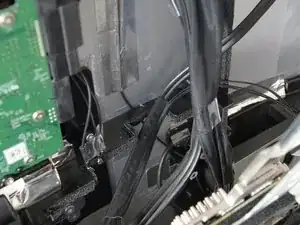
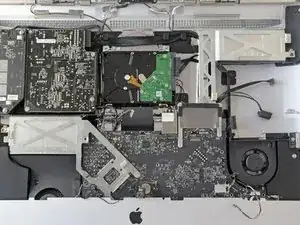
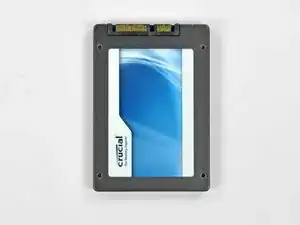
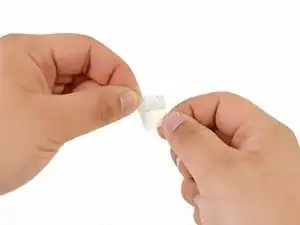
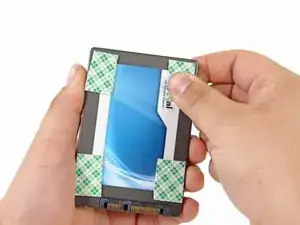
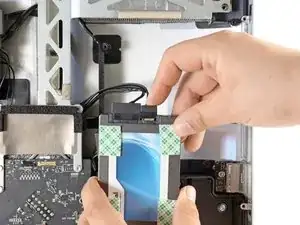
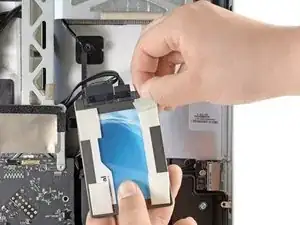
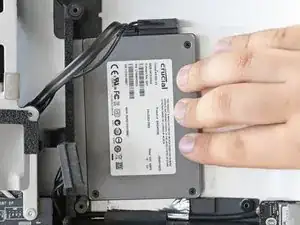

I am going to put a very important comment here. Before you start this process listen to the fans on your iMac do any of them sound obviously loud (think about how quiet your iMac used to sound as a reference) If you notice one or more of them sounding substantially loud compared to the others consider locating a replacement fan prior starting this process. After all if you are already “in the neighborhood” it is a shame to do all this work only to have to disassemble your imac a couple weeks later because you realize the fan is failing. I speak from my own personal learning experience of having to disassembly my iMac 3 weeks later because the HDD was failing and apparently the moving the fan around was just enough to push it to start really under performing.
Wizbang FL -
I’m not sure why it is necessary to remove the RAM. As far as I can tell, it can remain in place during this procedure.
gordonhamachi -